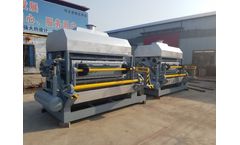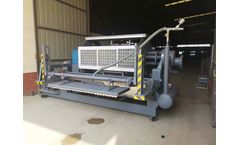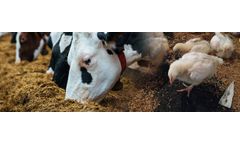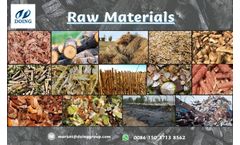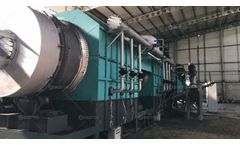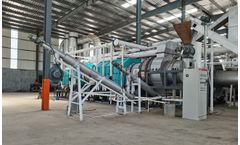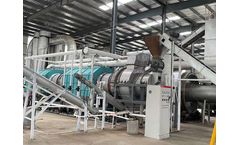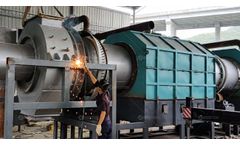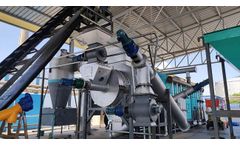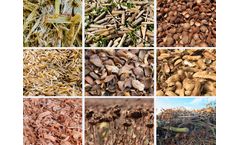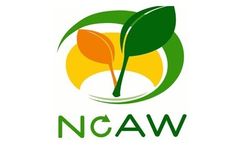Refine by
Agricultural Residues Articles & Analysis
28 articles found
Cost Reduction and Resource Optimization With an operational model based on recyclable input materials, the quail egg tray making machine enables significant cost reductions in raw material sourcing. Wastepaper, agricultural residue, and carton offcuts are commonly used as feedstock, converting low-value waste into commercially viable packaging. ...
Pulp moulding machine is designed to process a variety of materials, such as recycled paper, cardboard, or agricultural residues. Confirm that the machine you choose is compatible with the raw materials you plan to use. ...
Biochar is a byproduct of biochar production processes that utilize organic waste materials, such as agricultural residues, making it an environmentally friendly option for farmers. ...
Biochar’s properties make it an ideal soil amendment, helping farmers improve soil health while also promoting sustainability in agriculture. What is Biochar? Biochar is a carbon-rich material produced through the process of pyrolysis, where organic biomass, such as agricultural residues or forestry waste, is heated in an oxygen-limited ...
Agricultural waste, which includes materials such as crop residues, wood chips, and nutshells, can be a valuable resource when converted into high-quality charcoal. ...
In the case of agricultural waste biomass, residues like crop stalks, husks, and shells undergo thermal decomposition at temperatures typically between 300°C and 700°C. ...
As global awareness of environmental issues continues to rise, the demand for sustainable waste management solutions is more pressing than ever. In recent years, the push for sustainable practices has brought composting to the forefront of waste management solutions. Composting, the process of decomposing food waste into nutrient-rich soil, has traditionally been a slow, labor-intensive ...
Let's delve into the myriad benefits of producing charcoal from agricultural waste biomass. 1. Waste Valorization Agricultural waste biomass, such as crop residues, straw, husks, and stalks, is abundantly available in agricultural regions worldwide. ...
Crop Productivity: Incorporating biochar into agricultural soils has been shown to increase crop yields and improve crop quality. Its beneficial effects on soil fertility, nutrient availability, and water holding capacity contribute to enhanced plant growth and productivity. Sustainable Agriculture: Biochar promotes sustainable agriculture ...
The Bounty of Agricultural Residues Jute Sticks: Fibrous Riches from Harvest As farmers harvest jute, a fibrous goldmine is left behind. ...
One sustainable and transformative method is the conversion of agricultural residues into charcoal. This article explores the significance of this process and its role in sustainable agriculture. ...
This age-old practice, while meeting energy demands, has led to detrimental consequences such as soil erosion, loss of biodiversity, and increased carbon emissions.Agricultural Waste as a Sustainable AlternativeThe dawn of a more sustainable era introduces the concept of utilizing agricultural waste for charcoal production. Agricultural residues, ...
Women and food-centric interventions through the NATURE+ Initiative aim to increase the resilience of rural women. This years’ International Day of Rural Women puts a spotlight on, “Rural Women Cultivating Good Food for All.” The CGIAR Initiative on Nature-Positive Solutions (NATURE+) aims to re-imagine, co-create and implement nature-positive, solutions-based agri-food systems ...
The stable and controlled heat output of charcoal enables precise temperature management, critical for the success of greenhouse agriculture. Waste Utilization and Environmental Impact Conversion of Agricultural Residues Wood charcoal making machines contribute to efficient waste utilization in agriculture. ...
Introduction Agricultural waste poses a significant challenge for farmers and the environment. The disposal of crop residues and other organic materials can be a burden, leading to pollution and resource wastage. ...
Waste-to-Resource: Sustainable Waste Management 1.Agricultural Residues: From Problem to Solution Biochar production equipment addresses the issue of agricultural residues by transforming them into valuable resources. ...
In the realm of modern agriculture, where innovation is the driving force behind sustainable practices, biochar stands as a beacon of promise. ...
Biochar Production: A Transformational Process Definition and Principles of Biochar Production Biochar production involves the thermal decomposition of biomass, such as agricultural waste, in a low-oxygen environment. This process, known as pyrolysis, transforms the biomass into a stable carbon-rich material called biochar. ...
Through the approach of a circular economy the project seeks to develop models in which the valorisation of agricultural wastes is optimised on a territorial and seasonal scale. The treatment and utilisation of these residues as by-products takes the load off agriculture and industry and reduces the use of the primary raw materials. ...
Namakkal Location: Namakkal, Tamil Nadu (India) Output: 2.4MW Electricity Input Materials: 250 TPD Multi-Feedstock Press Mud, Chicken Litter, Agricultural residues ...

